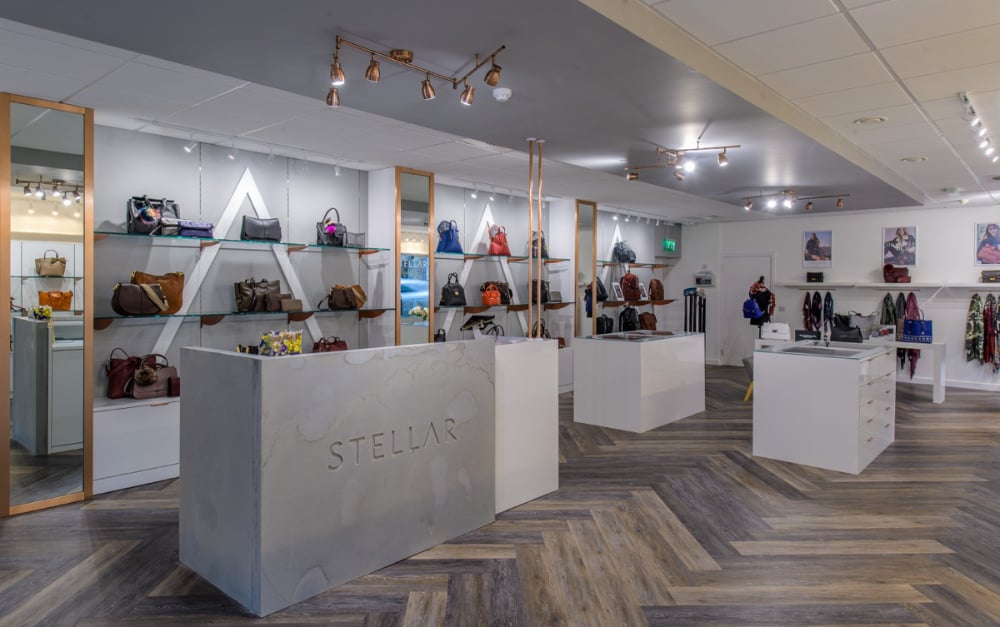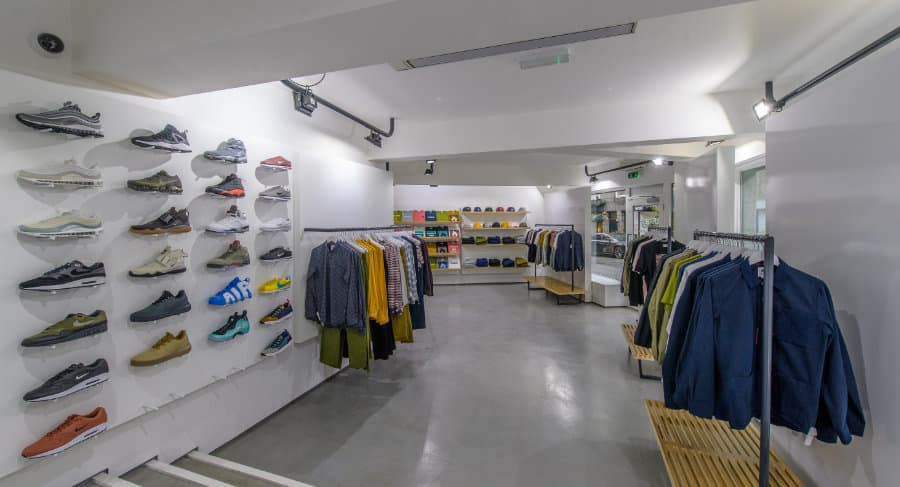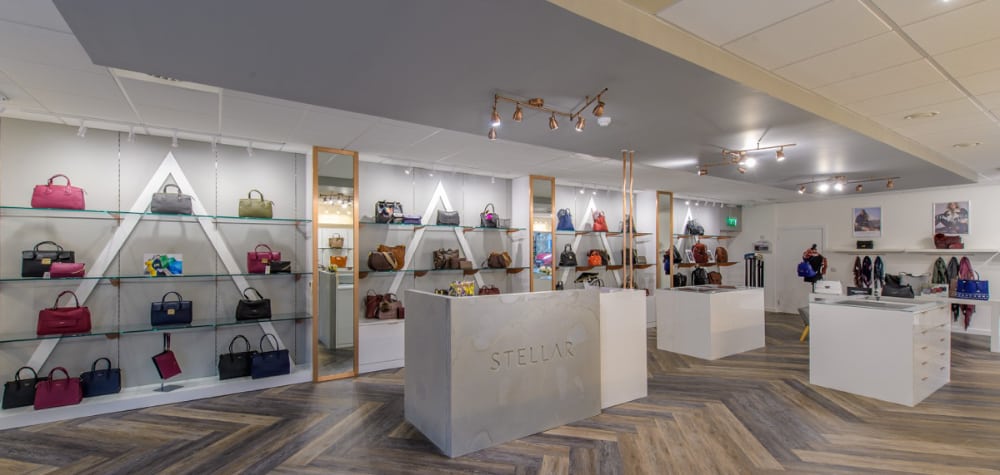Have a Crack at Polished Concrete for Your Next Fit Out Project
Synonymous with the industrial and factory feel of yesteryear, as well as prized for use in large scale construction, the relatively recent craze for concrete interiors has recast it as a ‘go to’ material for designers everywhere.
And it’s not only down to the trend for New York loft-styled industrial design interiors (although, certainly that has helped give this fabulously versatile and durable material prominence).
No, today’s homeowners, bar, retail, hotel and restaurant proprietors are now well aware of concrete’s glamorous and versatile side. Polished concrete floors and polished concrete worktops in kitchens, bars, reception areas and on shop floors are attracting plenty of admiring glances and comments these days thanks to their cool minimalist aesthetic and resulting glamour.
The reason polished concrete is regarded as luxurious is because of its similarity to marble in the sense it has that same wonderful shine, sleekness and smooth tactile feel, yet it manages to come at a fraction of the cost.
Different forms and uses of concrete as a design material
Used as surface material – whether on flooring, worktops or walls – concrete can be left untouched and rough for a matt appearance; which is perfect for an industrial design look in lofts, bars, kitchens etc. It can also be etched with a particular design, logo or motto for branding purposes.

We made sure Stellar’s branding was subtle yet striking by etching the name into its concrete counter in the popular Aberdeen store
Then again, when polished, concrete results in a sleek, stylish and contemporary finish for domestic or commercial purposes. Today concrete is most widely used in design purposes for flooring or work surfaces. But that really may not be for long… That’s because another bonus to using concrete is that it can easily be mixed with other materials. It looks terrific, for instance, when combined with exposed brickwork for an industrial style wall. Then again, it can also be combined with glass, wood or stone with sensational results in the form of unique, eye-catching furniture and accessories. Today’s designers are producing fabulous seating, bookcases, baths, lamps, and even speakers from concrete. It wouldn’t be too far off the mark to insist that concrete makes a terrific focal point to any dining room, bar area, reception, shop or home by adding weight – both materially and aesthetically – to what’s already there. And to think there was a time when we were all so unimaginative that all we could think of using concrete for was our driveways and paths…So, what changed?
Why concrete became recognised as an interior design ‘must have’
Initially designers and architects turned to concrete during, and in the aftermath of, the 2007 recession. It was an inexpensive material that looked great and promised years – decades, in fact – of use. However, with experimentation it soon became clear that although polished concrete in particular co-ordinated beautifully with wood and the likes of steel, it also looked terrific when contrasted with upmarket materials such as copper and gold; the metals provided the grey with a lovely warmth that was difficult to replicate with other materials. And so a new luxury trend was born. And when the leading designers and architects of the day start experimenting with a material or look well, a ‘trend’ becomes a ‘must have’ that’s here to stay. Another element in concrete’s favour was that as well as being inexpensive and easy to obtain, it was also a colour co-ordinator’s dream. Being a neutral shade it was easy to use with a variety of different shades and textures. So, not only did the accountants favour concrete then, but the designers of commercial premises loved using it too.

The neutral grey of the polished concrete floors and walls at clothing store Hanon in Aberdeen allowed the bright colouring of the clothing and shoes to shine
Benefits of using concrete
In a nutshell, these are the main points concrete has in its favour, but we’re sure you’ll have others too:
- It’s incredibly practical. It would take an awful lot to damage the surface of a polished concrete worktop or floor
- It’s hygienic, making it the perfect material for a kitchen worktop or bar surface
- Concrete can be moulded or cast into just about any shape and size you like
- It looks luxurious and is beautifully smooth to touch
- It co-ordinates beautifully with most coloured walls or accessories, including black and white. Then again, your polished concrete worktop is also available in a range of shades
- As well as working well with a variety of colours, concrete also looks great next to natural materials such as wood, woven fabric and green foliage
- It works particularly well with an industrial design or minimalist aesthetic
- Polished concrete is certainly considered a contemporary look – but not so trendy that it will date. After all, it’s already been regarded as a leading material for interior designers for more than five years now
- It doesn’t take a lot of work to maintain – just reseal it every couple of years to maintain its tough non-porous surface.
- It’s not expensive material to buy compared to marble and other glamorous worktop surfaces.
How to look after your polished concrete floors or worktop
Without a doubt, one of the great things about having a polished concrete floor is that unlike its wooden, vinyl or stone counterparts, it doesn’t need to be waxed or polished to the same extent in order to maintain its wonderful lustre and shine.
But there’s more – being more durable concrete will be able to withstand far more traffic, will hardly scratch and is incredibly durable. This is especially the case if you put entrance mats on either side of the door to catch dust particles and the dirt from customer’s shoes.
Some dust etc will get onto the polished concrete floor, of course, and the best way to deal with this is to mop the floors using a microfiber cloth and hot water mixed with a pH neutral soap. In a commercial setting any non-abrasive pad with a high-speed buffer will work well. Absolutely avoid acidic cleansers ie those with bleach, vinegar, citrus etc since they’ll cause the floor to lose its sheen after a while.
Why it’s important to seal concrete
If liquids such as citrus, wine or milk spill onto the floor then it’s best to clean them up ASAP to prevent staining. This is why it’s important to seal the concrete on installation and then every few years afterwards since the process of sealing will ensure that you’ll have time to wipe up those spills before they turn into stains.
Considering concrete for your next design project?
Here at Steampunk we specialise in creating breathtakingly bespoke and contemporary polished concrete floors and worktops. We achieve this via the use of our own concrete fabrication studio at our Perthshire premises, where we regularly experiment with fantastic new formulas for worktops, splashbacks, tables and floors. All of our concrete surfaces are beautifully hand-finished on the premises. We also create specific pre-cast moulds for fireplaces, tables, tiles and other items of furniture or home accessory. To find out if concrete could be right for your interior project why not take a look through the dedicated Concrete Page on our website. You can also call us for advice and a no-obligation chat with one of our project managers tel: 0800 197 2922. We look forward to hearing from you!

